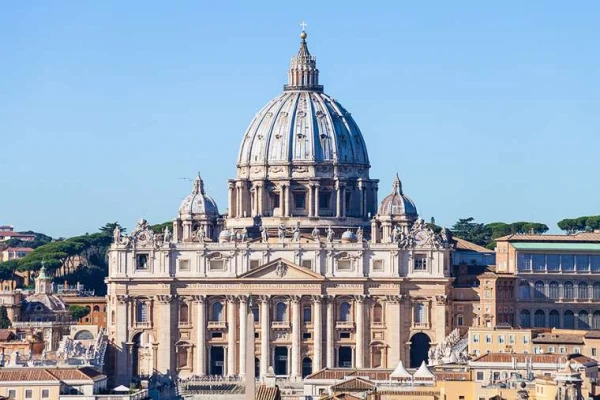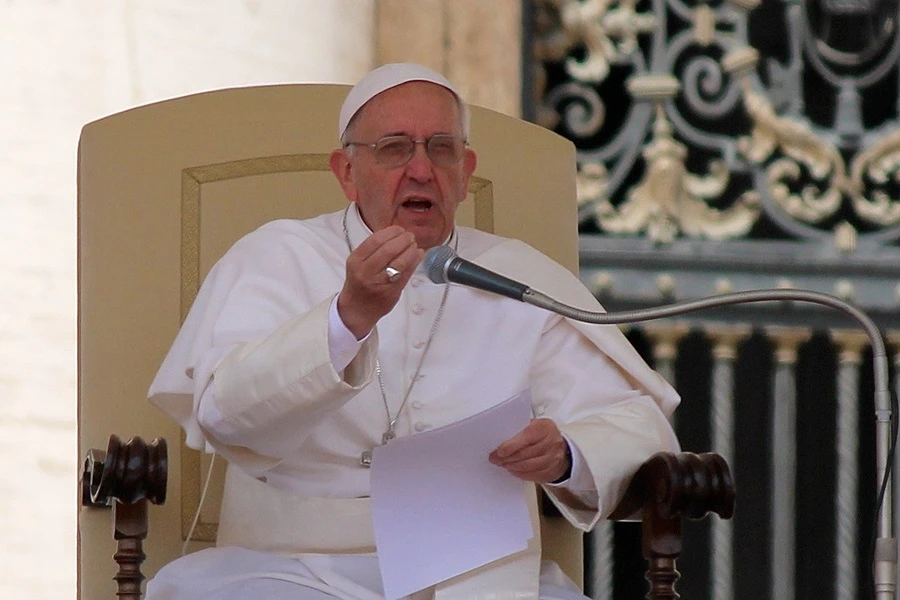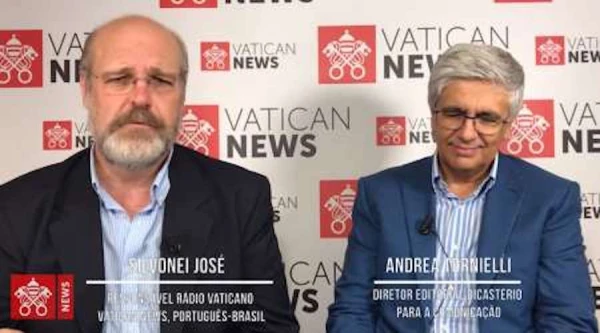
Vatican City, Jan 7, 2021 / 03:33 pm (CNA).- The draft of the delayed document that will reform of the Roman Curia gives the Vatican’s Secretariat of State a more prominent place in the workings of the Church’s central governing bureaucracy. But during the year 2020, Pope Francis moved in the opposite direction.
In fact, within the span of a few months, the Secretariat of State has been gradually divested of all of its financial power.
In September, the Pope appointed the new commission of cardinals of the Institute for Works of Religion (IOR) – the also called “Vatican bank.” For the first time, the Secretary of State was not among the cardinal members. Nor is the Secretariat of State represented in the Commission on Reserved Matters that the Pope established in October via the first Vatican procurement law. In November, the Pope decided that the Secretariat of State should transfer all its funds to APSA, the equivalent of a Vatican central bank.
In December, Pope Francis spelled out how the handover should occur, clarifying that the Secretariat of State will be under the constant oversight of the Vatican’s leading financial operations watchdog, the Secretariat for the Economy, which has been renamed the “Papal Secretariat for Economic Affairs.”
These moves are in direct contrast with the Roman Curia’s draft constitution, Praedicate Evangelium, which continues to be revised by the Council of Cardinals.
Indeed, the document’s draft proposes the establishment of a real “papal secretariat” within the Vatican Secretariat of State, which would take the place of Pope Francis’s private Secretariat and coordinate the various bodies of the Roman Curia. The papal secretariat would, for example, summon the periodic interdicasterial meetings and even bring dicasteries together to work on specific tasks or projects when needed.
If Praedicate Evangelium remains essentially as it appears to be in the draft version that circulated last summer, then the piecemeal reforms that Pope Francis has introduced will make the new regulations old and outdated as soon as they are promulgated.
If, on the other hand, the draft is being heavily amended to match to what Pope Francis has been doing, then Praedicate Evangelium will not see the daylight any time soon. Instead, it will continue to be under examination for an even longer time, putting the Church in a state of “reform as you go.”
In other words, rather than setting reforms in stone with a binding document like Praedicate Evangelium, as previous popes have done, reforms will come via Pope Francis’ personal decisions, which several times have overturned his previous ones.
That is why the path of Curial reform has been characterized, until now, by many as back-and-forth.
First, it was the Secretariat for the Economy seeing its powers shrinking.
Initially, Pope Francis understood Cardinal George Pell’s reformist ideas and supported a significant recasting of financial control mechanisms. The first phase began with establishing the Secretariat for the Economy in 2014.
But by 2016, Pope Francis embraced the cause of the Secretariat of State, which argued that Cardinal Pell’s approach to financial reform did not take into consideration the Holy See’s particular nature as a State, not a corporation. The opposite views escalated into a fight when the Secretariat for the Economy signed a contract for a massive audit with Pricewaterhouse Coopers. The auditing contract was signed in December 2015 and scaled down by the Holy See in June 2016.
After reducing the scope of Cardinal Pell’s audit, the Secretariat of State regained its central role in the Roman Curia, while the Secretariat for the Economy was weakened. When Cardinal Pell had to take a leave of absence in 2017 to go back to Australia and face infamous allegations, of which he was later acquitted, the Secretariat for the Economy’s work got stalled.
Pope Francis appointed Fr. Juan Antonio Guerrero Alves to replace Cardinal Pell in November 2019. Under Fr. Guerrero, the Secretariat for the Economy regained power and influence. Simultaneously, the Secretariat of State got caught in the scandal that followed by the purchase of a luxury real estate in London.
With the decision to take any financial control from the Secretariat of State, the pope returned to his original vision of a strong Secretariat for the Economy. The Secretariat of State has lost any sense of autonomy since its financial operations are now transferred to APSA. Now, every financial move by the Secretariat of State falls directly under the Secretariat for the Economic oversight.
The transfer of funds to APSA seems to recall Cardinal Pell’s project for Vatican Asset Management. APSA, as the Vatican Central Bank, has been become the central office for Vatican investments.
So far, after the latest papal moves, the Secretariat of State is the only Vatican department with a former financial autonomy that has lost it. Pope Francis’ decision has not yet involved the Congregation for the Evangelization of People –which handles, among others, the massive funds of the World Mission Sunday- and the Vatican City State Administration, which also have financial autonomy.
But many Vatican observers agree that no dicastery can now consider itself safe from Pope Francis’ on-the-go reform, since the pope already proved himself ready to change direction unexpectedly, and to do it very quickly. In the Vatican, there is already talk of “a permanent state of reform,” rather that the definitive one that should have come with Praedicate Evangelium.
In the meantime, the dicasteries’ activities are at a standstill, while Curia members wonders if the Curia reform document will ever be out. The Secretariat of State is the first victim of this situation. But most likely it won’t be the last.
If you value the news and views Catholic World Report provides, please consider donating to support our efforts. Your contribution will help us continue to make CWR available to all readers worldwide for free, without a subscription. Thank you for your generosity!
Click here for more information on donating to CWR. Click here to sign up for our newsletter.





Leave a Reply